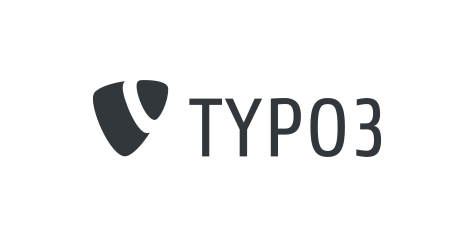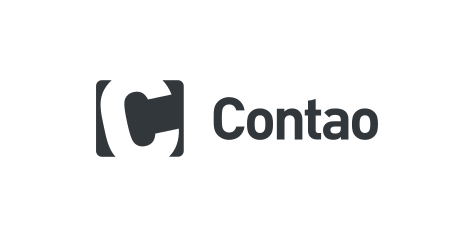Content Management Systems (CMS) Berlin
Questions?
Click here to go to Windows or Mac remote maintenance




CMS steht für Content-Management-System (Inhaltsverwaltungssystem)
Diese Programme dienen zur Erstellung, Bearbeitung und Organisation von Online Inhalten. Mit Content ist sind hier z.B. Texte, Bilder, Grafiken, Videos, Podcasts etc gemeint. Content-Management-Systeme erfreuen sich bereits seit längerem größter Beliebtheit, vor allem weil sie wegen ihres grafischen Interfaces, auch ohne das Beherrschen von Programmiersprachen bedient werden können. Ein weiterer Vorteil von aktuellen CMS-Programmen ist das Open-Source-Prinzip. Durch die offen einsehbaren Quellcodes kann das CMS von Unternehmen individuell angepasst und durch funktionelle Erweiterungen verbessert werden. Ein weiterer Vorteil liegt in den geringeren Kosten gegenüber einer rein kommerziellen Software.
Zu den heute bekanntesten und meistgenutzten CMS-Programmen gehören:
- Joomla
- WordPress
- Drupal
- Contao
- TYPO3
- Redaxo
In aller Regel geht es um Web-Content-Management-Systeme wenn von CMS die Rede ist. Es gibt allerdings auch andere CMS-Programme mit deren Hilfe Offline-Content verwaltet werden kann. ausschließlich im Web Verwendung findet, wird als Web-Content-Management-System bezeichnet. Hier konzentrieren wir uns ausschließlich auf CMS für die Content-Verwaltung von Webseiten.
Since 30 % of the Internet currently consists of WordPress websites and only 0.7 % is TYPO3-based, let's take a closer look at what a CMS offers using WordPress as an example.
Bei der Verwaltung von digitalen Inhalte mit einem Content-Management-System, stellt die Trennung von Layout und Inhalt den wohl größten Vorteil dar. Bei der Erstellung von Webseiten kann der grafische Aufbau mit Templates erleichtert und beschleunigt werden. Der Content der Website kann davon unabhängig im CMS bearbeitet werden. Das gerät umso mehr Unternehmen zum Vorteil, die im Bereich E-Commerce tätig sind. Deren Onlineshops müssen ständig erweitert und aktualisiert werden, was dank des übersichtlichen User Interface von WordPress schnell und unkompliziert möglich ist..
Dazu können auch Mitarbeiter ohne Programmierkenntnisse mittels CMS Texte einpflegen und bearbeiten. Kleine und mittlere Unternehmen werden so in die Lage versetzt, ohne externe Dienstleister, die Verwaltung der eigenen Online-Inhalte zu übernehmen.
WordPress ist bereits seit 2003 am Markt. Im Internet Maßstab also ein Dinosaurier. Ursprünglich für die Erstellung und Pflege von Blogs gedacht, wurde WordPress mit deren steigender Popularität ebenfalls immer beliebter. Heute ist WordPress sozusagen erwachsen geworden und hat sich, nach zahlreichen Updates und Ergänzung mit den aktuellsten Plugins, zu einem vollwertigen CMS entwickelt, das nichts vermissen lässt, was man von einem State of the Art – CMS erwarten kann. So ist WordPress heut, ohne Bedenken, auch für komplexe Websites und Corporate Blogs geeignet. Trotz der großen Pugin-Vielfalt und der zahlreichen Individualisierungsmöglichkeiten, bietet WordPress, eben wegen der Blog-Vergangenheit, eine User Experience, die im CMS-Bereich seinesgleichen sucht.
CMS Systems

CMS – Content Management Systeme aus einer Hand

How do we work? The project process.

Zunächst wird ein grober Ablauf der anstehenden Aufgaben erstellt, der im Fortgang der Umsetzung ergänzt oder modifiziert wird.
Der Kunde versorgt das Design-Team mit Informationen über sein Unternehmen, die Produkte und die Marktsituation. Welche Mitbewerber treten am Markt auf? Aus welchen favorisierten Angeboten besteht die Produktpalette des Unternehmens? Welche Marktentwicklung ist zu erwarten, welche Ziele verfolgt der Kunde?
All diese Fragen bestimmen die Auswahl der Funktionalitäten, die von der Software und vom Design umgesetzt und repräsentiert werden.
Der Umfang des Angebots und die Funktionen des Designs werden erstellt, Inhalte und Anforderungen an ihre Darstellung werden umgesetzt und zunächst vorläufig implementiert. Das Team formuliert strukturelle und strategische Alternativen, um dem Kunden Entscheidungsmöglichkeiten und zusätzliche Elemente für die Website anzubieten. Eine Marktanalyse ergänzt das Vorhaben, damit der Kunde die Positionierung seines Unternehmens am Markt objektiv beurteilt, seine Marke dem Segment entsprechend präsentiert.
Aufgrund der Informationen der Analyse wird ein Design-Entwurf erstellt. Das Unternehmen soll personalisiert dargestellt werden, die Webtechnik und eine adäquate Benutzerführung werden implementiert. Die Funktionalitäten der Seite sind insgesamt auch im Design erfasst. Die Software ist in ihren grundsätzlichen Strukturen und ihrer Architektur erstellt.
Das Programmieren beginnt, festgelegte Funktionen und jede Komponente des Entwurfs werden in einen konkreten Programmcode übersetzt und ausgeführt. Besteht entsprechender Bedarf, wird ergänzend zum Programm eine grafische Oberfläche für den Benutzer eingerichtet. Dem Anwender wird damit die Handhabung zu Testzwecken erleichtert.
Die Textredaktion erstellt den Content, Fotos und Grafikelemente werden hinzugefügt. Die Optimierung für Suchmaschinen und Übersetzungen sind weitere Aspekte der Gestaltung des Web-Auftritts.
Die Ergebnisse werden dem Kunden für die Zwischenabnahme zur Verfügung gestellt. Mit erfolgter Zustimmung wird die Software implementiert. Die beim Kunden vorhandene Testumgebung ist Grundlage der Installation. Wenn nötig, kann eine adäquate Umgebung auch durch den Anbieter realisiert werden.
Das Projekt wird in die vorhandenen Bedingungen integriert und wenn nötig modifiziert. An diesem Punkt der Projektentwicklung wird die Interaktion mit Betriebssystemen optimiert, Datenbanken werden eingerichtet und die Kommunikation mit anderen Anwendungen des Kunden realisiert.
Anpassung und Integration in die Hardware- und Software-Konstellation ist die Bedingung für einen reibungslosen Ablauf und eine integrierte Funktionalität auch der neu hinzugefügten Komponenten.
Alle Funktionen und Komponenten werden nun im Rahmen eines Testplans analysiert und gegebenenfalls korrigiert. Festgestellte Schwachstellen sind zu modifizieren, der Testdurchlauf wird wiederholt, bis die problemlose Lauffähigkeit der Anwendung garantiert ist.
Integrierte Module und vom Kunden gewünschte Sonderlösungen werden auf ihre Funktion getestet. Die Darstellung in verschiedenen Browsern und ebenso auf diversen Endgeräten wird geprüft und angepasst.
Sind alle Testabläufe zufriedenstellend absolviert und die notwendigen Korrekturen und Anpassungen vorgenommen, erfolgt die Abnahme durch den Kunden. Diese Phase des Projekts dient auch der Aufnahme letzter Änderungen und Ergänzungen, bis schließlich alle Komponenten der Software reibungslos funktionieren. Denn die Aufbereitung des Inhalts, die gewünschten Erweiterungen und Umstellungen sollten den Vorstellungen des Kunden entsprechen.
Nach dem Erstellen des Impressums und der Datenschutzerklärung ist das Projekt bereit, online zu gehen.
Auch nach erfolgreicher Realisierung des Projekts ist uns das Einholen des Feedbacks des Kunden wichtig. Oft wird erst im alltäglichen Betrieb festgestellt, dass noch Komponenten hinzugefügt werden sollten oder Verbesserungen möglich sind. Bei sich ergebenden Fragen sind wir für unsere Kunden jederzeit ansprechbar und begrüßen eine Zusammenarbeit auch über das Projektende hinaus.




